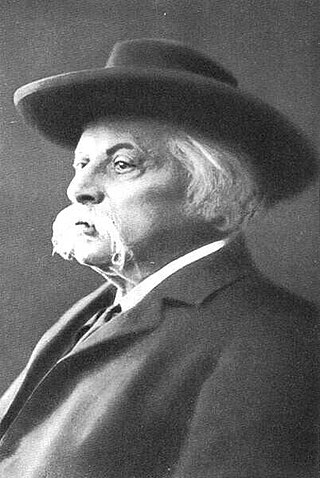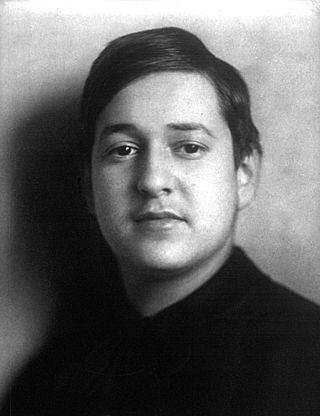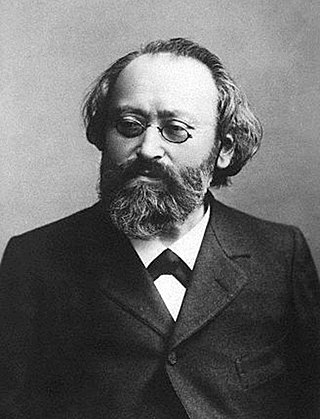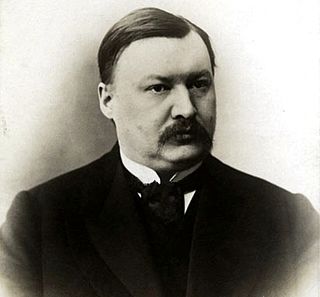
Karl Goldmark was a Hungarian-born Viennese composer.

Joseph Joachim was a Hungarian violinist, conductor, composer and teacher who made an international career, based in Hanover and Berlin. A close collaborator of Johannes Brahms, he is widely regarded as one of the most significant violinists of the 19th century.

Erich Wolfgang Korngold was an Austrian composer and conductor, who adopted US nationality after fleeing from Europe. A child prodigy, he became one of the most important and influential composers in Hollywood history. He was a noted pianist and composer of classical music, along with music for Hollywood films, and the first composer of international stature to write Hollywood scores.

Felix Mendelssohn's Violin Concerto in E minor, Op. 64, MWV O 14, is his last concerto. Well received at its premiere, it has remained among the most prominent and highly-regarded violin concertos. It holds a central place in the violin repertoire and has developed a reputation as an essential concerto for all aspiring concert violinists to master, and usually one of the first Romantic era concertos they learn. A typical performance lasts just under half an hour.

Frederick Stock was a German conductor and composer, most famous for his 37-year tenure as music director of the Chicago Symphony Orchestra.
Sergei Prokofiev began his Violin Concerto No. 1 in D major, Op. 19, as a concertino in 1915 but soon abandoned it to work on his opera The Gambler. He returned to the concerto in the summer of 1917. It was premiered on October 18, 1923 at the Paris Opera with Marcel Darrieux playing the violin part and the Paris Opera Orchestra conducted by Serge Koussevitzky. Igor Stravinsky made his debut as conductor at the same concert, conducting the first performance of his own Octet for Wind Instruments.
The Piano Concerto, Op. 38, by Samuel Barber was commissioned by the music publishing company G. Schirmer in honor of the centenary of their founding. The premiere was on September 24, 1962, in the opening festivities of Philharmonic Hall, now David Geffen Hall, the first hall built at Lincoln Center in Manhattan, with John Browning as soloist with the Boston Symphony Orchestra conducted by Erich Leinsdorf.

The Violin Concerto No. 3 in B minor, Op. 61, by Camille Saint-Saëns is a piece for violin and orchestra written in March 1880. Saint-Saëns dedicated the concerto to fellow composer-virtuoso Pablo de Sarasate, who performed the solo part at the premiere in October 1880 in Hamburg.

Max Bruch's Violin Concerto No. 1 in G minor, Op. 26, is one of the most popular violin concertos in solo violin repertoire and, along with the Scottish Fantasy, the composer's most famous work. It has been recorded often.
Erich Wolfgang Korngold composed his Violin Concerto in D major, Op. 35, in 1945.

The ’’'Violin Concerto in A minor’’', Op. 82, by Alexander Glazunov is one of his most popular compositions. Written in 1904, the concerto was dedicated to violinist Leopold Auer, who gave the first performance at a Russian Musical Society concert in St. Petersburg on 15 February 1905. The British premiere of the concerto followed just over a year later, under the direction of Sir Henry Wood and with Mischa Elman as soloist. The American premiere of the work was not until 27 October 1911. It was performed by Efrem Zimbalist at his American debut with the Boston Symphony Orchestra.
Violin Concerto No. 2 in D Minor "in the Hungarian Manner", Op.11 is a Romantic violin concerto written by violinist Joseph Joachim (1831–1907). Rarely performed, it has been described as "the Holy Grail of Romantic violin concertos." by music critic David Hurwitz.

Max Bruch's Violin Concerto No. 2 in D minor, Op. 44 was composed during 1877, following a failed attempt in 1874, and dedicated to the great Spanish violinist, Pablo de Sarasate. It was premiered in London by Sarasate, conducted by Bruch, on 4 November 1877.

Max Bruch's Violin Concerto No. 3 in D minor, Op. 58, was composed in 1891 and dedicated to the violinist/composer Joseph Joachim, who had persuaded him to expand a single movement concert piece into a full violin concerto.
The Violin Sonata in F minor, Op. 4, MWV Q 12 for violin and piano was composed by Felix Mendelssohn in 1823 and is the only one to carry an opus number. Mendelssohn composed two other violin sonatas, both in F major, that were not published in his lifetime. This was published with a dedication to his friend and violin teacher, Eduard Rietz, who was also dedicatee of the composer's Octet in E-flat major, Op. 20.
Rustic Wedding Symphony, Op. 26 is a symphony in E-flat major by Karl Goldmark, written in 1875, a year before his renowned Violin Concerto No. 1. The symphony was premiered in Vienna on 5 March 1876, conducted by Hans Richter. Johannes Brahms, who was a frequent walking companion of Goldmark's, and whose own Symphony No. 1 was not premiered until November 1876, told him "That is the best thing you have done; clear-cut and faultless, it sprang into being a finished thing, like Minerva from the head of Jupiter". Its first American performance was at a New York Philharmonic Society concert, conducted by Theodore Thomas on 13 January 1877.
The Piano Concerto in C-sharp minor, Op. 45, is a composition for solo piano and orchestra in four movements by the American composer Amy Beach. The work was composed between September 1898 and September 1899. It was first performed in Boston on April 7, 1900, with the composer as the soloist and the Boston Symphony Orchestra performing under the conductor Wilhelm Gericke. The composition is dedicated to the musician Teresa Carreño and was the first piano concerto by an American female composer.

The Concerto for Violin and Orchestra "Anne-Sophie" is a violin concerto by André Previn. It was composed in 2001 by request of the Boston Symphony Orchestra for Anne-Sophie Mutter. Previn conducted the first performance in March 2002 in Boston. The same performers recorded the work in 2003, and received a Grammy Award for it in 2005.

The Piano Concerto in F minor, Op. 114, is a concerto for piano and orchestra composed by Max Reger in Leipzig in 1910. He dedicated the work to Frieda Kwast-Hodapp, who premiered it in Leipzig on 15 December 1910 with the Gewandhausorchester conducted by Arthur Nikisch. The difficult composition has been rarely performed and recorded. Pianists who have tackled it range from the American Rudolf Serkin, who first recorded it in 1959, to Markus Becker who was the soloist in an award-winning recording in 2017.












